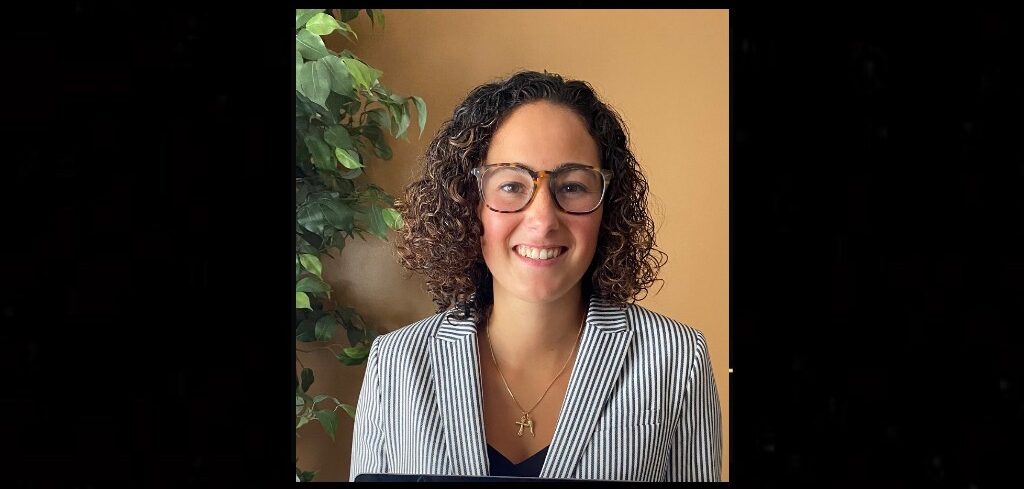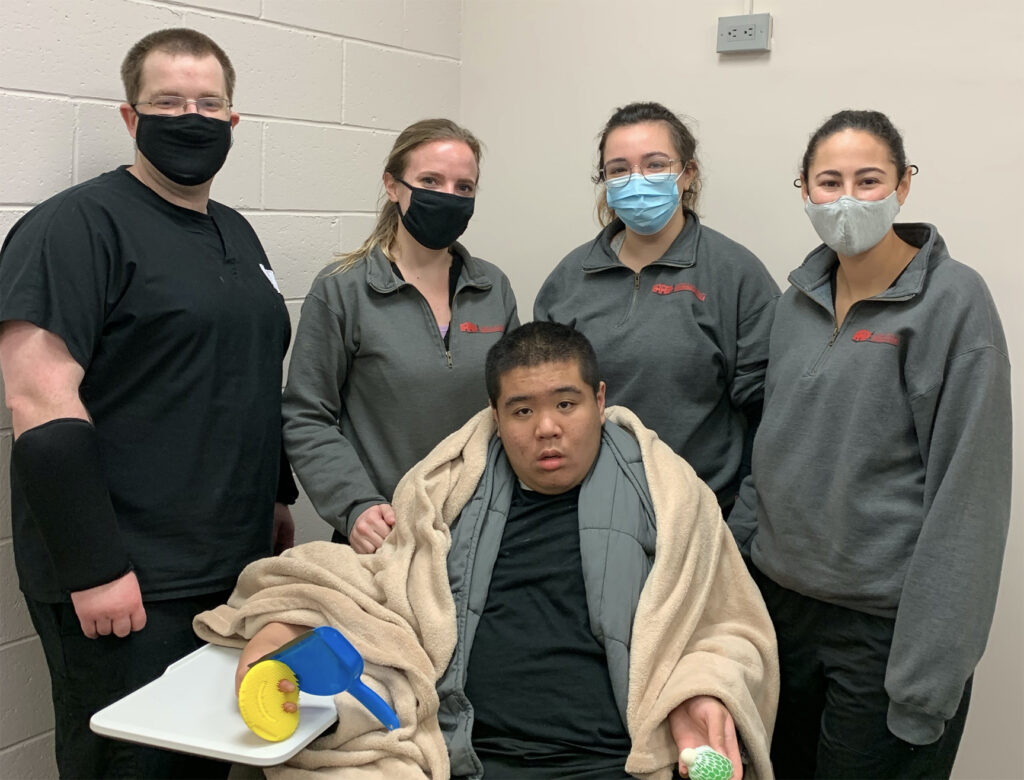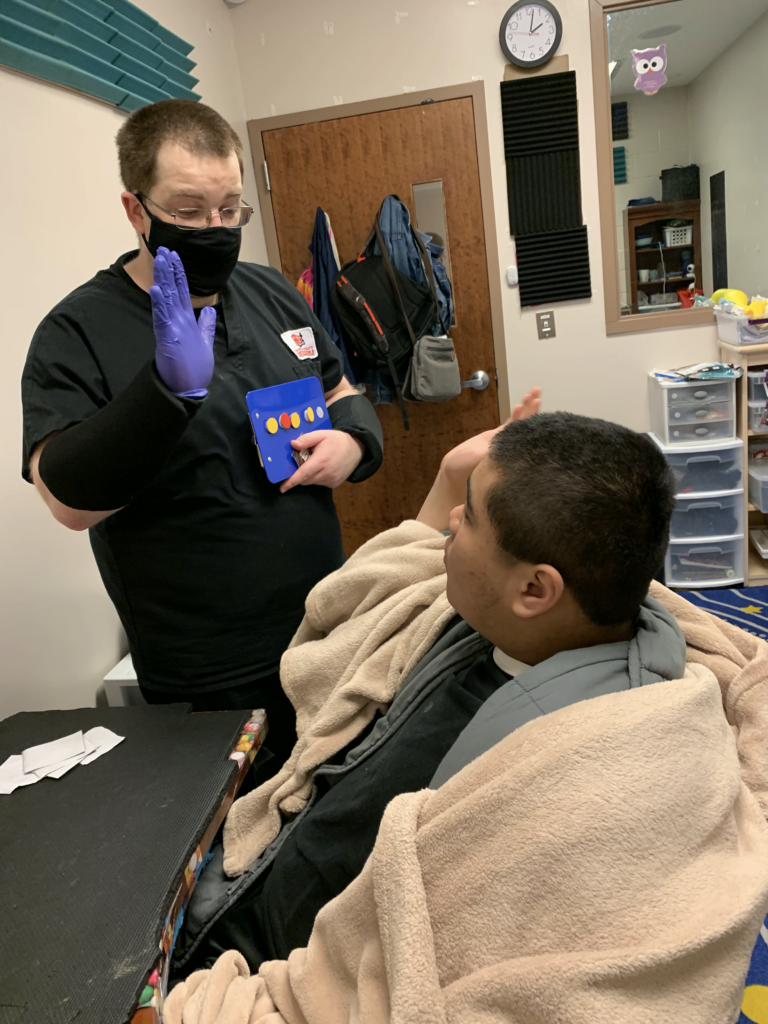Caldwell University
January 8, 2021
Graduate Students Train First Responders on Interacting with Individuals with Autism Spectrum Disorder

Carleana Hickey, a doctoral student and assistant director of training at the Center for Autism and Applied Behavior Analysis, was one of the presenters in the training for first responders.
Caldwell, N.J., Jan.8, 2021- It is every parent’s worst nightmare – having a child run out of the house and get lost or see a child erupt in behavior that may be of danger to others in the household. For parents with children with autism spectrum disorder (ASD) or other disabilities that fear is compounded by challenges in communication, language or behavior, issues that first responders may not know how to navigate.
To address this, the faculty and graduate students at Caldwell University’s Center for Autism and Applied Behavior Analysis (ABA) held a webinar in December for members of the West Essex First Aid Squad, Caldwell and West Caldwell Police Departments and other area first responders to train them to handle emergencies involving people with ASD and other special needs.
The graduate students described the characteristics of ASD, how best to communicate with individuals diagnosed with ASD and how to anticipate and respond to potential difficulties during an emergency. Carleana Hickey, assistant director of training at the center and a doctoral student of Dr. Sharon Reeve, professor of applied behavior analysis, explained how individuals with ASD communicate in a variety of ways – non-vocal, vocal or augmentative, in an alternative manner such as using sign language, iPads or other devices. “One big thing to remember—probably is the most important part—is that regardless of the communication type, the individual’s response may not be accurate or contextual,” said Hickey.
Jessica Amador, a doctoral student of Dr. Ruth DeBar, professor of applied behavior analysis, said, “The sad reality is that individuals with ASD are three times more likely than the general population to die because of injury.” She reported that children and young teens with autism spectrum disorder are 40 times more likely to die from injury than typical young people and that drowning is the most common fatal injury , accounting for 46 percent of all injury related deaths among children with ASD—statistics from a study in the American Journal of Public Health.
ABA master’s student Micah Lewis cited an American Academy of Pediatrics survey of parents showing that nearly half of the children with ASD between the ages of 4 and 10 have tried to elope. “This, paired with the inability to identify potential dangers in their environment, can be disastrous,” said Lewis. “I’ve seen kids with ASD run into busy parking lots without looking for cars.” Individuals with ASD may engage in aggressive behavior towards others, he explained. “Aggression is a symptom of the disability; it’s not personal,” he said.

Jasmin Rivera, an ABA master’s student and former member of the Lodi, New Jersey Volunteer Ambulance Rescue Squad, provided communication guidelines for first responders including how to follow the caregiver’s lead and to find out the best way to communicate with the patient.
She advised that first responders ask dispatchers if there are any special considerations—information that could be useful in medical or behavioral situations.When she worked as an EMT she tended to arrive on the scene “blazing with lights and sirens,” but since working with people with special needs she believes responders should think more about how they approach the home. “It is important to consider if a patient has sensitivities to loud sounds or lights.”For those with ASD or intellectual disabilities, “it is important to never withhold care, but take special consideration with this population.”She advised taking assessments and sample histories, finding out if the child has a preferred item or toy that can calm or soothe and learning the most effective way to communicate with the patient. “The caregiver is your best guide to conducting an efficient assessment for your patient,” said Rivera who aspires to work in Black and Hispanic communities with children with ASD and their families.
David Black, captain of the West Essex First Aid Squad, said the training was invaluable. “This is a different type of call…this is such a special situation…it is not just the patient you are dealing with…it is their families (too).” Black, who has been on the squad for 15 years, said the training provided insights into the heightened sensitivity of the patients. He wants new members to see that there are situations “beyond book knowledge—an improper advance could escalate a situation endangering all people involved.”
During his years on the squad Black has responded to calls from homes and schools where children with special needs are in distress and through this work he has developed compassion for the parents and the teachers. “The parents have to deal with it every day,” said Black who is on the board of trustees for The Bridge, a non-profit serving young people with substance abuse and mental health challenges.
Reeve said the training was “win-win” for all involved. “The squad received some initial training, which hopefully will benefit them, and it also gave our students a wonderful opportunity to disseminate critical information about ASD, behavioral management, communication, and assessment strategies.”
The faculty and students are collecting survey data from the responders who received the training and compiling it into a paper to submit to a peer-reviewed journal. Reeve hopes the center can offer more trainings to the West Essex First Aid Squad and neighboring police departments.
Black said the webinar was posted on the squad’s training portal for all members to watch. He was moved by the knowledge and empathy he saw in the university’s faculty and graduate students. “It gives you hope”.

How the training transpired
Black had connected with Reeve through Caldwell University President Matthew Whelan and Campus Safety Director Glenn Gates. Black asked Reeve if the center could set up a training session for first responders. Reeve was happy to meet Black especially since the squad had recently responded to an emergency situation at the center. “His team was very kind, professional and often took guidance from our team so we could collectively manage a difficult situation,” said Reeve.
About the Caldwell University Center for Autism and ABA
The Center for Autism and ABA provides effective intervention to people with ASD and other disabilities, researches and disseminates effective practice and provides training to students in the university’s master’s and doctoral programs in applied behavior analysis.
For information on the Center for Autism and ABA go to http://www.caldwelluniversityautismcenter.org/
To learn more about the master’s and doctoral programs in applied behavior analysis go to https://www.caldwell.edu/graduate/academic-department/applied-behavior-analysis/





